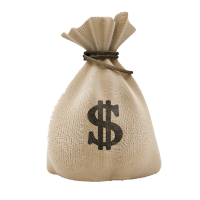Money supply - How much is there?

What this is all about is the
the amount of money in an economy. The amount of money in
circulation is important, because that partially determine how
much money we can acquire to spend for goods and services.
This can be especially when cash flow slows down.
When people don't have money they can spend, cash flow
decreases.
So we're going to discuss the sources of the
money supply.
First, there is the amount
of money printed. Money is printed by
the government and put into circulation, and people earn money
in their jobs. The government can increase the amount of
currency in circulation by deficit spending. This can
cause inflation in times of economic expansion, but it can
prevent, or reduce recessions in times of economic constriction
(in other words, deficit spending does NOT increase inflation
during a recession)..
Second, there is credit.
Another source of
money is credit, which is actually tomorrow's money used today
(we spend it today and pay it back tomorrow). When
the supply of money decreases and/or the speed of circulation
decreases, as occurs in a recession, credit can fill in the gap.
Unfortunately, a collapse of credit can in itself decrease the
money available, which can cause a recession. This has
happened more than once in our history. Further, when
recessions occur for other reason, people hold on to their
money, they borrow less because of an uncertain future, and
loans can also become harder to obtain.
Government spending:
When all this
happens, government spending, often based on government
borrowing, bolsters the economy by putting more money into
circulation, thereby keeping earnings and spending higher.
Some folks assume federal
spending should be like personal spending, that in both cases
spending should not exceed income. While there is some
truth in that assumption, it is not entirely the case. See
below for further explanation.
 To
read about cash flow
To
read about cash flow
 To
go to the Articles Page
To
go to the Articles Page

